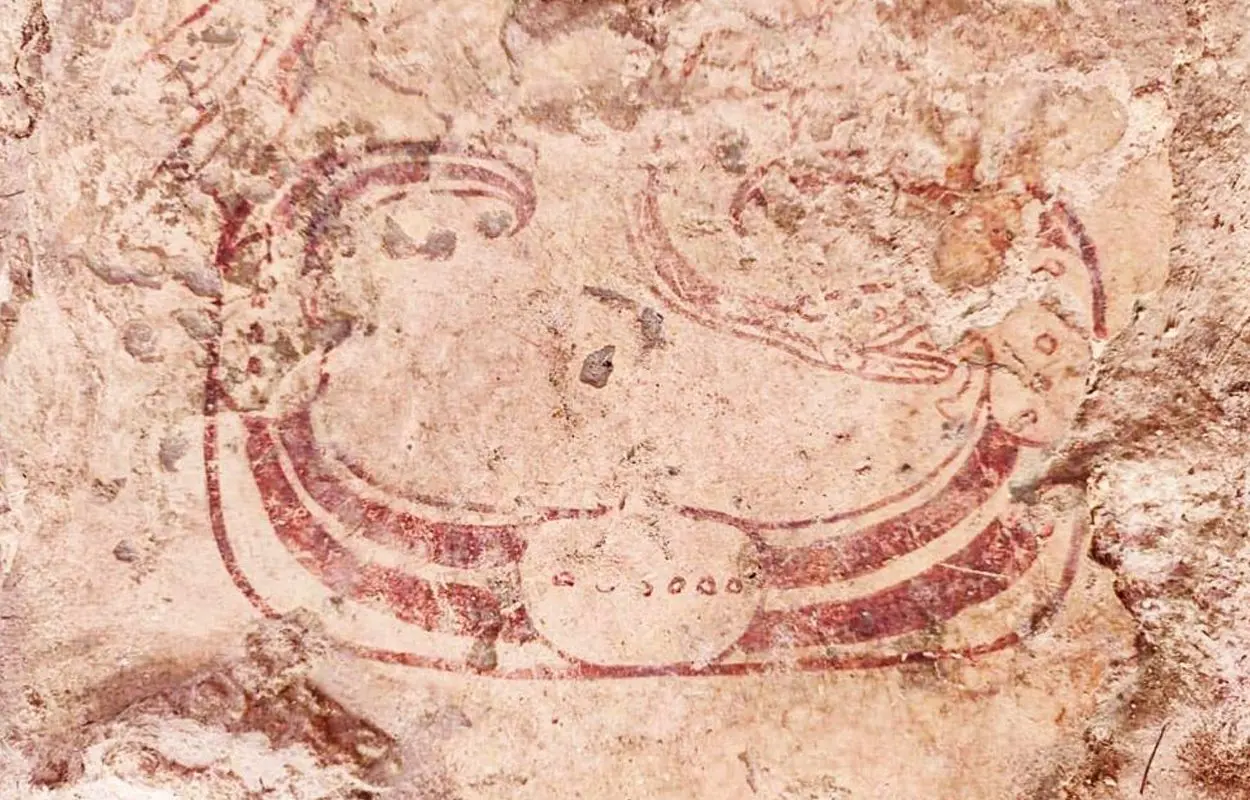Archaeologists from the National Institute of Anthropology and History (INAH) have discovered a painted vault lid at the Maya city of Ekʼ Balam.
Ekʼ Balam was a Maya city in the municipality of Temozón, Yucatán, Mexico. The city was occupied from the Middle Preclassic through the Postclassic, although it ceased to thrive as a major centre following the Late Classic.
The city consists of pyramidal platform temples, plazas, palaces, ballcourts, and a large central Acropolis. It is theorised that the city was hastily abandoned during a period of strife and great conflict.
Excavations conducted in the east-elevated plaza of the Acropolis has led to the discovery of a painted vault lid. The lid has a red “U”-shaped symbol, which according to the researchers is a representation of a cave, a possible allusion for the Maya underworld.
Similar examples of vault lids have been previously discovered in the Ekʼ Balam archaeological zone, providing archaeologists the names of several rulers of the city, in addition to information on construction dates of rooms in the royal palace and Acropolis.
The latest vault lid discovery also features the head and body of a serpent, which may be associated with K’awiil, a Maya god of lightning, serpents, fertility and maize.
According to Leticia Vargas de la Peña and Víctor Castillo Borges, Directors of the Ek’ Balam Archaeological Project: “This discovery provides new information about the builders of the elite enclosures of the east elevated plaza of the Acropolis, as well as evidence to date when they were erected.”
In February 2023, archaeologists conducting conservation works of the Acropolis announced the discovery of decorated architecture and ornamentation depicting a subdued warrior captured in battle.
Header Image Credit : INAH





